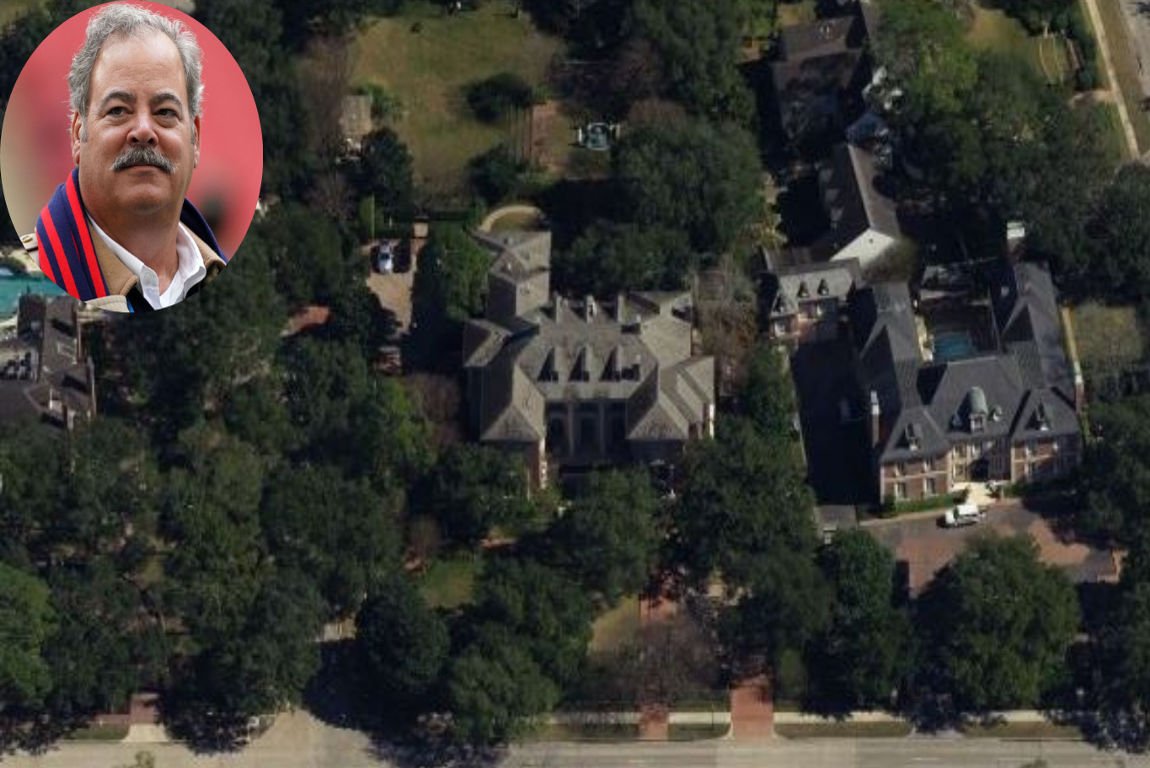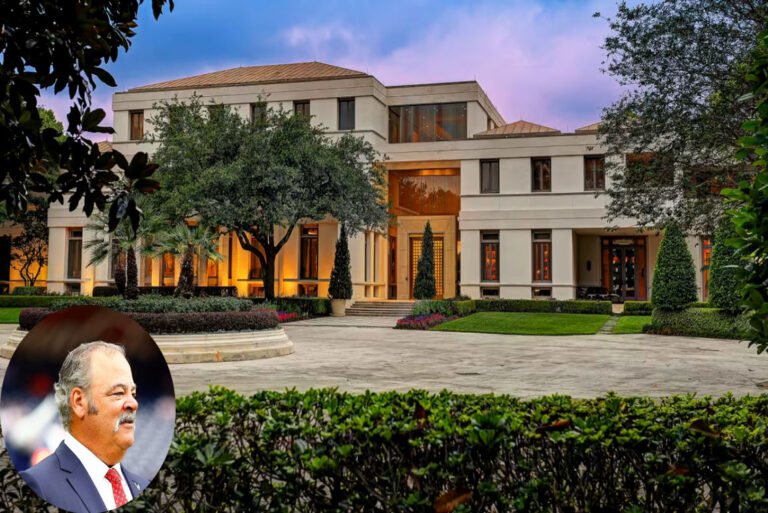The Cal McNair House stands as a testament to history, architecture, and the rich cultural heritage of Texas. Nestled in the heart of Brownsville, Texas, this historic home is more than just a structure—it’s a story waiting to be told. For history buffs, architecture enthusiasts, and anyone curious about Texas heritage, the Cal McNair House offers a unique opportunity to step back in time and experience history firsthand.
Historical Background of the Cal McNair House

Origins of the Cal McNair House
The Cal McNair House was built in 1937, a time when America was recovering from the Great Depression and entering a new era of suburban development. Vivian Faust and Malcolm Prothro McNair, prominent figures in the Brownsville community, commissioned the house. Located in the elite Los Ebanos Addition neighborhood, the house quickly became a symbol of prestige and architectural innovation.
The McNair family played a significant role in shaping the local community. Their contributions to Brownsville’s development and their ties to the region’s history make the house an important cultural landmark. The home’s construction during the late 1930s also reflects the broader trends of suburban planning in Texas as cities expanded and embraced new architectural styles.
The Historical Context of the Era
The late 1930s was a transformative period in American history. The country was emerging from economic hardship, and families like the McNairs were investing in homes that symbolized stability and progress. The Cal McNair House embodies this spirit, blending traditional design elements with modern innovations that were popular at the time.
Brownsville itself was undergoing significant changes during this period. As one of Texas’s oldest cities, it was a hub of cultural and economic activity. The construction of the Cal McNair House in such a prominent neighborhood highlights the city’s growth and the aspirations of its residents.
Architectural Significance of the Cal McNair House

California Monterey Style Architecture
You may also read (bruce buffers dream home).
One of the most striking aspects of the Cal McNair House is its architectural style. The house is designed in the California Monterey style, a unique blend of Spanish Colonial and American influences. This style was popular in the early 20th century, particularly in regions with warm climates, such as Texas and California.
Key features of the house include:
- Two-story brick veneer: This gives the house a sturdy yet elegant appearance.
- Asymmetrical L-front plan: A hallmark of the Monterey style, this layout adds visual interest and functionality to the design.
- Cast-iron-railed balcony: This feature not only enhances the house’s aesthetic appeal but also provides a practical outdoor space.
- Shallow-pitched side-gabled roof: A design choice that reflects the influence of Spanish Colonial architecture.
- Subtropical landscaping: The house is surrounded by lush greenery, creating a serene and inviting atmosphere.
The Architect: Alexander Hamilton Woolridge
The Cal McNair House was designed by Alexander Hamilton Woolridge, a renowned architect known for his innovative designs. Woolridge’s work often combined traditional elements with modern touches, and the Cal McNair House is a prime example of his talent. His influence is evident in the house’s attention to detail, from the intricate balcony railings to the carefully planned layout.
A Blend of Cultures
The house’s architecture reflects the cultural melting pot that is Texas. By blending Southern Californian styles with Texan regional identity, the Cal McNair House stands as a symbol of the state’s diverse heritage. It also serves as a reminder of the architectural trends that shaped the Lower Río Grande Valley during the 1930s and 1940s.
The McNair Family Legacy and Connection to the House

Who Was Cal McNair?
While the house is named after Cal McNair, it’s essential to understand his family’s legacy. Cal McNair is a prominent figure in Texas, known for his contributions to sports and philanthropy. However, the house’s history predates him, as it was initially built for his ancestors, Vivian Faust and Malcolm Prothro McNair.
A Reflection of Family Heritage
You may also read (deion sanders house).
The Cal McNair House is more than just a building—it’s a reflection of the McNair family’s values and heritage. The home’s design, location, and historical significance all speak to the family’s deep roots in the Brownsville community. For visitors, exploring the house is a way to connect with the McNair family’s story and the broader history of the region.
Experiencing the Cal McNair House Today
What to Expect When Visiting
Visiting the Cal McNair House is like stepping into a time capsule. The house has been carefully preserved to maintain its original charm, allowing visitors to experience its history firsthand. From the moment you step onto the property, you’ll be greeted by the lush subtropical landscaping that surrounds the house.
Inside, you’ll find a treasure trove of historical details. The interior features period-appropriate furnishings, intricate woodwork, and other design elements that transport you back to the 1930s. The house’s layout and decor provide a glimpse into the lifestyle of the McNair family and the era in which they lived.
Cultural Tourism and Historic Preservation
The Cal McNair House plays a vital role in Brownsville’s cultural tourism. It’s a popular destination for history enthusiasts, architecture students, and anyone interested in Texas heritage. The house is also a shining example of historic preservation, demonstrating the importance of protecting landmarks for future generations.
Events and Tours
While specific events and tours may vary, the Cal McNair House often hosts activities that allow visitors to engage with its history. Guided tours provide in-depth insights into the house’s architecture and the McNair family’s legacy. Special events, such as historical reenactments or educational workshops, offer additional opportunities to learn and explore.
Why the Cal McNair House Matters: Cultural and Educational Value
Preserving History
Historic homes, such as the Cal McNair House, are invaluable resources for preserving history. They provide a tangible connection to the past, allowing us to learn about the people, events, and cultural trends that shaped our world.
Educational Opportunities
The house offers numerous educational benefits. For architecture students, it’s a chance to study the California Monterey style up close. For historians, it serves as a window into the social and economic history of 1930s Texas. And for the general public, it’s an opportunity to experience history in a way that’s both engaging and informative.
A Symbol of Texas Heritage
The Cal McNair House is more than just a historic home—it’s a symbol of Texas’s rich heritage. Its inclusion in the National Register of Historic Places underscores its importance and ensures that it will be preserved for future generations to enjoy.
Tips for Visiting and Exploring Historic Homes Like the Cal McNair House
If you’re planning a visit to the Cal McNair House or any other historic home, here are a few tips to enhance your experience:
- Do Your Research: Learn about the house’s history and significance before your visit.
- Check Hours and Tours: Make sure to check the house’s visiting hours and tour availability in advance.
- Follow Photography Rules: Some historic homes have restrictions on photography, so be sure to follow the guidelines.
- Explore the Surrounding Area: Brownsville is home to many other historic sites, so take the time to explore the city.
You may also read (don henley homes).
